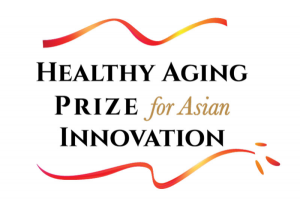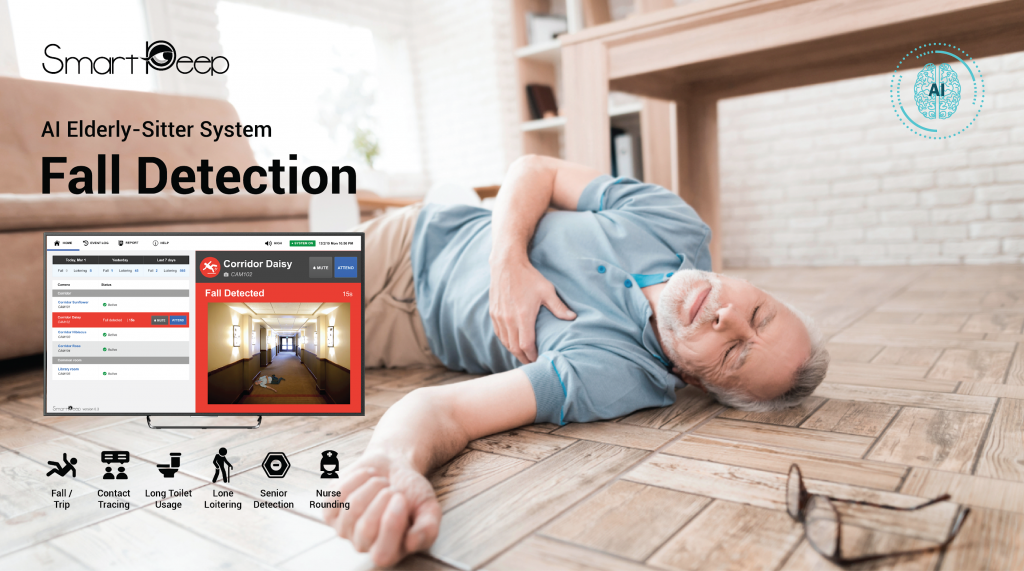2020 HAPI 2nd Prize Winner
Ensuring the safety of older persons in long-term care facilities depends on two key factors: the timely implementation of routine tasks—feeding, bathing, checking vitals, providing medicine, and so on—and responding without delay if a resident has an accident or is at risk. As nurses and other caregivers often find themselves stretched to the limit, however, that consistency and speed are sometimes difficult to achieve.
In recent years, a number of new technologies have been developed to help address this challenge and support the work of the caregivers. There are bed sensors and wearable devices for fall prevention and detection, systems to detect falls in the bathroom, sensors to monitor for bedsores, and so on. But one high-tech start-up based in Singapore and Malaysia decided to take a different approach that would integrate those various functions more effectively. By combining existing surveillance technology with AI, they have created what they refer to as “care-oriented optical sensors” that provide proactive alerts, drawing the caregivers’ attention to anomalies that occur in a resident’s room or a common area of the facility. This fits with what their founder and CEO Dr. Lim Meng Hui describes as their “mission of helping caregivers to provide better elderly care with AI.”
The SmartPeep AI Elderly-Sitter System is a computer-sized machine that can power 20 to 50 surveillance cameras, extending the caregivers’ line of sight to constantly monitor nursing home residents. SmartPeep will be launching a similar system for in-home use in Q4 2020, to support older people who want to age safely at home.
Using AI, the system can recognize the actions of the residents and alert caregivers if a person has fallen. It can also alert caregivers if a senior is trying to exit their bed, which can help prevent falls. The technology can also track movements of bedridden residents to help prevent bedsores, track the presence of residents in common areas to let caregivers know if someone has wandered off, and detect falls within the bathroom by monitoring the entrance to the toilet and alerting staff if someone does not emerge in a normal range of time. The system can also recognize and alert staff to behavior changes, such as less frequent trips to the bathroom or less movement within the resident’s room. And the system has the added benefit of being non-intrusive since it does not require that the residents wear any devices that could harm delicate skin. Moreover, it has been designed to protect the privacy and dignity of the residents and patients.
For example, if a frail resident is trying to get out of bed at night, the system will send an alert and a caregiver will be dispatched to that resident’s room. The system recognizes the staff’s uniform when they arrive at the room and keeps track of how quickly they responded. As one nurse manager explains “the system is just like the second pair of eyes for nurses & caregivers and it is especially helpful in preventing falls, which is crucial for our residents”. It also records when a nurse or other caregiver makes a routine visit to a resident or patient, allowing employers to make data-driven improvements to the care they offer.
To date, the system has been installed in four residential care centers and three hospitals in Singapore, Australia, and Malaysia. The business model is a fee-based service that charges an annual fee per camera or bed that is monitored using their AI system. SmartPeep works closely with clients to identify the most important needs in order to improve both care and productivity. The impact has been substantial, with a 50–95 percent reduction in response time for falls, a 30–50 percent reduction in actual falls, and a 30–50 percent reduction in unattended wandering.
KEYS TO SUCCESS
- Eases the burden on caregivers by providing an extra set of eyes on residents, while also tracking minor changes in behavior that would be difficult for caregivers to detect on their own. At the same time, it tells facility managers whether caregivers are providing scheduled care and prompt emergency care to residents.
- Works with existing surveillance systems and integrates a number of monitoring services in a non-intrusive way.



